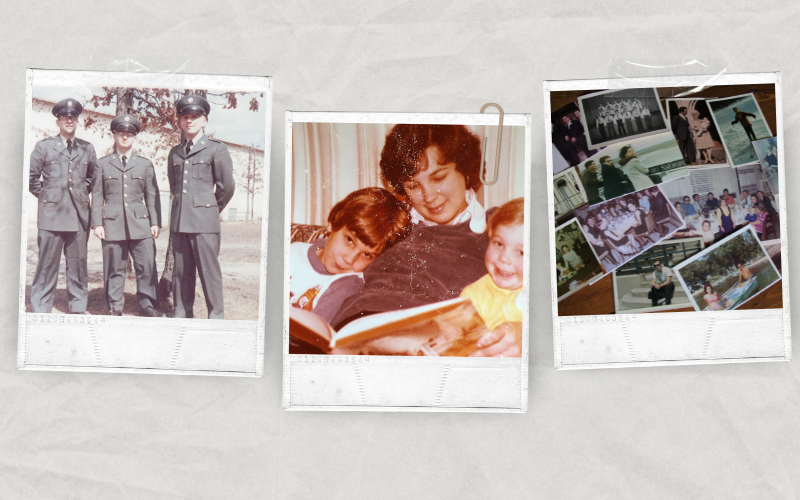We all know and recognize the term “legacy,” and its definition is relatively straightforward. However, it can mean something different to each of us. So what does it mean to you? And, what is included in your legacy?
Capture Your Families Stories
When considering the preservation of a family’s history, we often think about physical objects like jewelry, furniture, books, artwork, etc. These tangible items serve as bridges between the past and present, offering future generations a deeper understanding of their roots. However, our photos are often forgotten and treated as an afterthought. A Photo Legacy allows us to incorporate our family’s stories in items passed down from one generation to the next. It is visual narrative that captures significant events, milestones, and everyday moments, interwoven with family stories, cultural traditions, and shared values. The essence of a photo legacy lies in exploring the context behind each image, understanding the who, what, when, where, and why in each significant photograph.
Just like our children won’t want to inherit the accumulation of our life’s possessions, they also don’t want to inherit tens of thousands of old photos from albums, boxes, bins, or digital devices. It is our responsibility to curate, preserve, and identify images that hold the most meaning, ensuring they include information to convey stories from one generation to the next.
Creating a photo legacy involves managing collections scattered across various devices, storage bins, albums, and cloud accounts. While it may seem overwhelming, a systematic approach facilitates the efficient retrieval and display of the most meaningful images.
The Five Steps
The process of creating a photo legacy involves five essential steps:
- Sort: Apply the 80/20 rule – remove 80%, keep the best 20%. An easy-to-remember process providing a practical framework for streamlining your collection is the ABCs of Photo Organizing – A photos for favorites, B photos for those hard-to-decide moments, and C photos for potential discarding.
- Backup: Follow a 3-2-1 backup strategy to ensure memories stay safe. Store anything important, like your photos, in at least three different locations, on two different types of media, with one kept off-site.
- Document the stories: Record the stories associated with your photos using a voice recording app on your phone or jot down the important details in a notebook or the Notes app. Preserving these details will help you tell the story down the road.
- Add in metadata: Similar to writing information on the back of a physical photo, embed metadata into your digital photos using universal software that captures who, what, where, when, and why of your legacy photos.
- Identify a historian: Knowing who the family historian is will streamline the process and ensure information reaches the right person.
Creating a photo legacy doesn’t have to be overwhelming. By setting clear goals and envisioning the legacy you wish to leave, the elements will seamlessly fall into place. The five steps to crafting a photo legacy require patience and proactive efforts to manage and organize your photos effectively. It’s a gradual process that pays tribute to the memories, stories, and values that render your family’s legacy genuinely exceptional.
Ready to embark on your own Photo Legacy journey? Start with a conversation with Certified Photo Manager, Lida Bunting who has curated thousands of photos for her clients and has started her own Photo Legacy project to spare her kids from the overwhelming task of sifting through mountains of photos in the future. Reach out at www.znimkacreations.com.
Content provided by Women Belong member Lida Bunting


 Women Belong Book Club: Revenge of the Tipping Point
Women Belong Book Club: Revenge of the Tipping Point Women Belong Progressive Networking Lunch - Chicago
Women Belong Progressive Networking Lunch - Chicago Connections - Online Networking Event
Connections - Online Networking Event The Freedom Formula: The Power of Productization
The Freedom Formula: The Power of Productization Women Belong Book Club: 55 Concepts
Women Belong Book Club: 55 Concepts